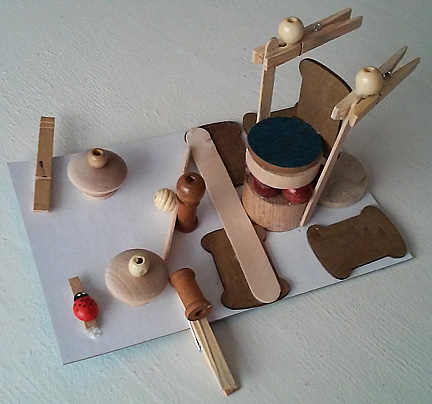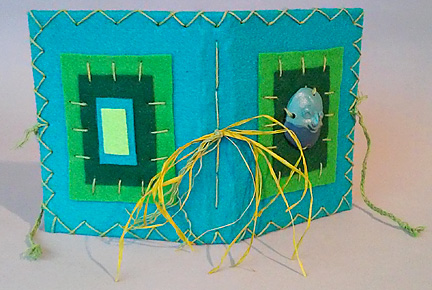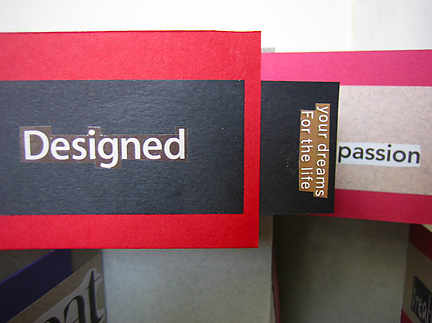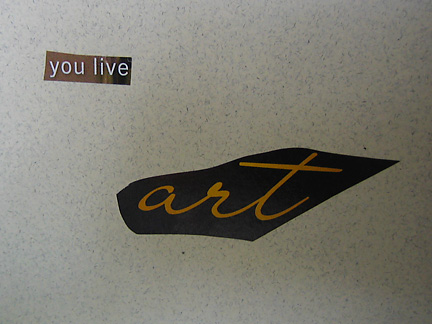“We Right The Book” IV
Making Scrolls…The Book That Rolls…
I am honored to serve as Artist in Residence at Verdugo Hill High School in Tujunga, CA (Los Angeles) for a group of 42 Senior English class Visual and Performing Arts (VAPA) students.
Our project is entitled, “We Right the Book“, and is supported by an Artist in residence grant from the City of Los Angeles Department of Cultural Affairs. I am working with the students on a series of bookmaking projects during weekly workshops held right in the classroom from September – December, 2017. The students are also assisting with bookmaking workshops held for the community at-large in the Sunland-Tujunga Branch of the Los Angeles Public Library.
The project is designed to offer participating students an outlet for feelings, thoughts, hopes and dreams related to their upcoming transition out of high school, and into the next epoch of their lives.
We started with the basics: Accordion Fold Books, created from folding equidistant sections of material. We moved from there to the fun, kinetic and versatile Flag Book Structure, then on to theatre-like Tunnel Books.
To change it up, we then created scrolls…the ancient, original portable (as opposed to stories written on cave walls…) books and rolled either horizontally or vertically. We attached bright tagboard sheets to wooden dowels, marbleized our own paper and used it, as well as other collage materials, rubber stamping, hole punched designs and more to our pieces. The results were….beautiful.
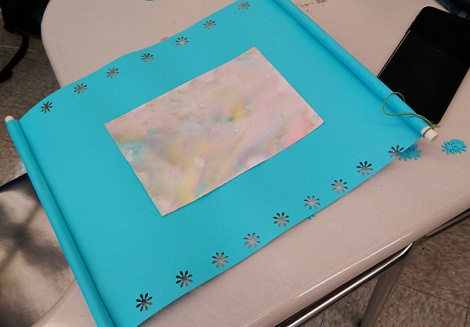 Summer dreaming?
Summer dreaming?
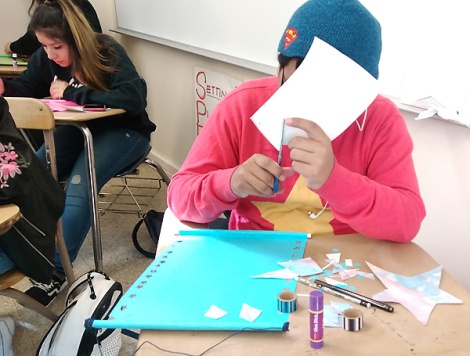 Focussed, and private.
Focussed, and private.
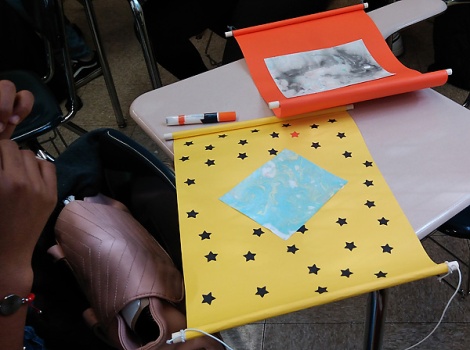 She punched out the star shapes from black paper, and glued them on…and it looks like we are seeing through to the night sky…
She punched out the star shapes from black paper, and glued them on…and it looks like we are seeing through to the night sky…
 Beautiful use of framing the marbled paper…
Beautiful use of framing the marbled paper…
 “Winter Wonderland”…no matter that we are in Southern California…imagination rules!
“Winter Wonderland”…no matter that we are in Southern California…imagination rules!
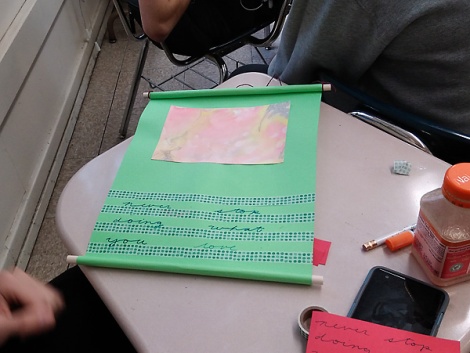 “Never stop doing what you love….”
“Never stop doing what you love….”
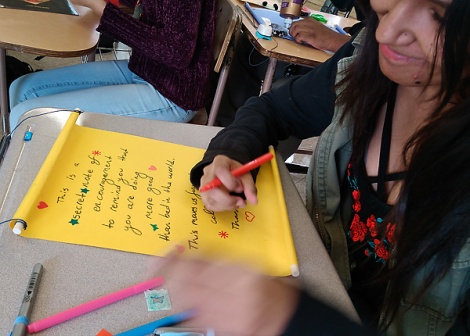 “This is the secret note of encouragement...” what an inspiring proclamation…
“This is the secret note of encouragement...” what an inspiring proclamation…
This is what it is all about.
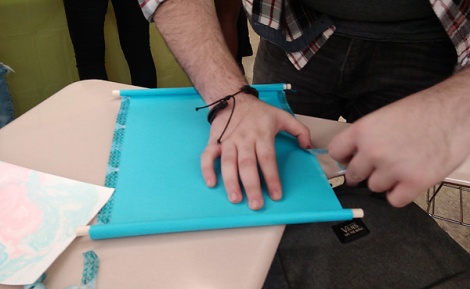
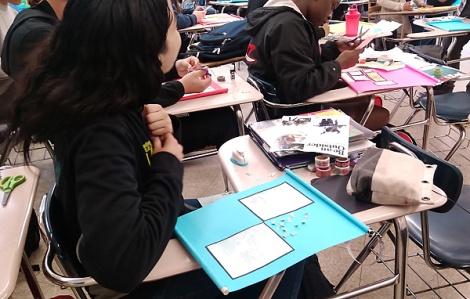
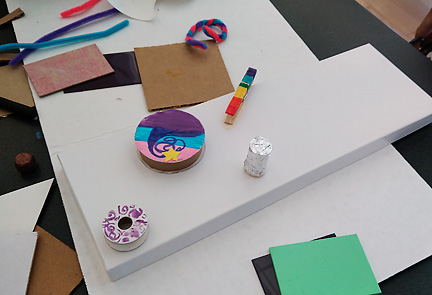

 Another young maker using the same wooden cutout in a whole different way. Clothespins and empty spools become hooks and clips for jewelry.
Another young maker using the same wooden cutout in a whole different way. Clothespins and empty spools become hooks and clips for jewelry.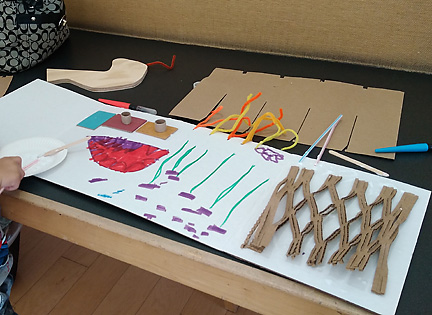 Drawing combined with unique packing material and plastic tiles topped by small spools form the visual structure for this young boy’s world.
Drawing combined with unique packing material and plastic tiles topped by small spools form the visual structure for this young boy’s world. Here the project board is used as a flat base, and din=mension is added with a gift box top, straws, and yet another employment of empty spools.
Here the project board is used as a flat base, and din=mension is added with a gift box top, straws, and yet another employment of empty spools.
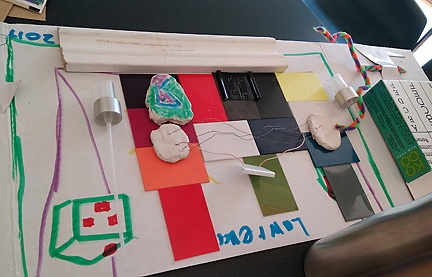 Lawrence worked what looked to be upside down on his project,
Lawrence worked what looked to be upside down on his project,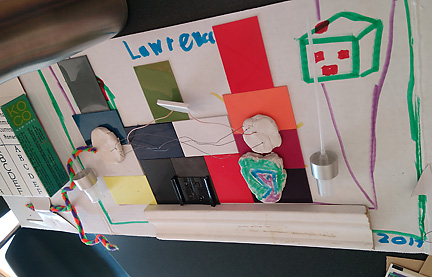 perhaps turning his project board base around to see how it was developing from both vantage points.
perhaps turning his project board base around to see how it was developing from both vantage points.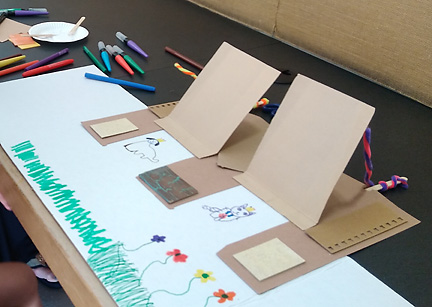 This lovely world of color, flowers animals and doors/flaps which lift up was created by a young girl of preschool age, working quietly in a corner with her mother. She made beautiful use of the materials, arranging cardboard, tile and paint samples and pipe cleaners to beautiful effect. I would love to visit this world for a bit!
This lovely world of color, flowers animals and doors/flaps which lift up was created by a young girl of preschool age, working quietly in a corner with her mother. She made beautiful use of the materials, arranging cardboard, tile and paint samples and pipe cleaners to beautiful effect. I would love to visit this world for a bit!






